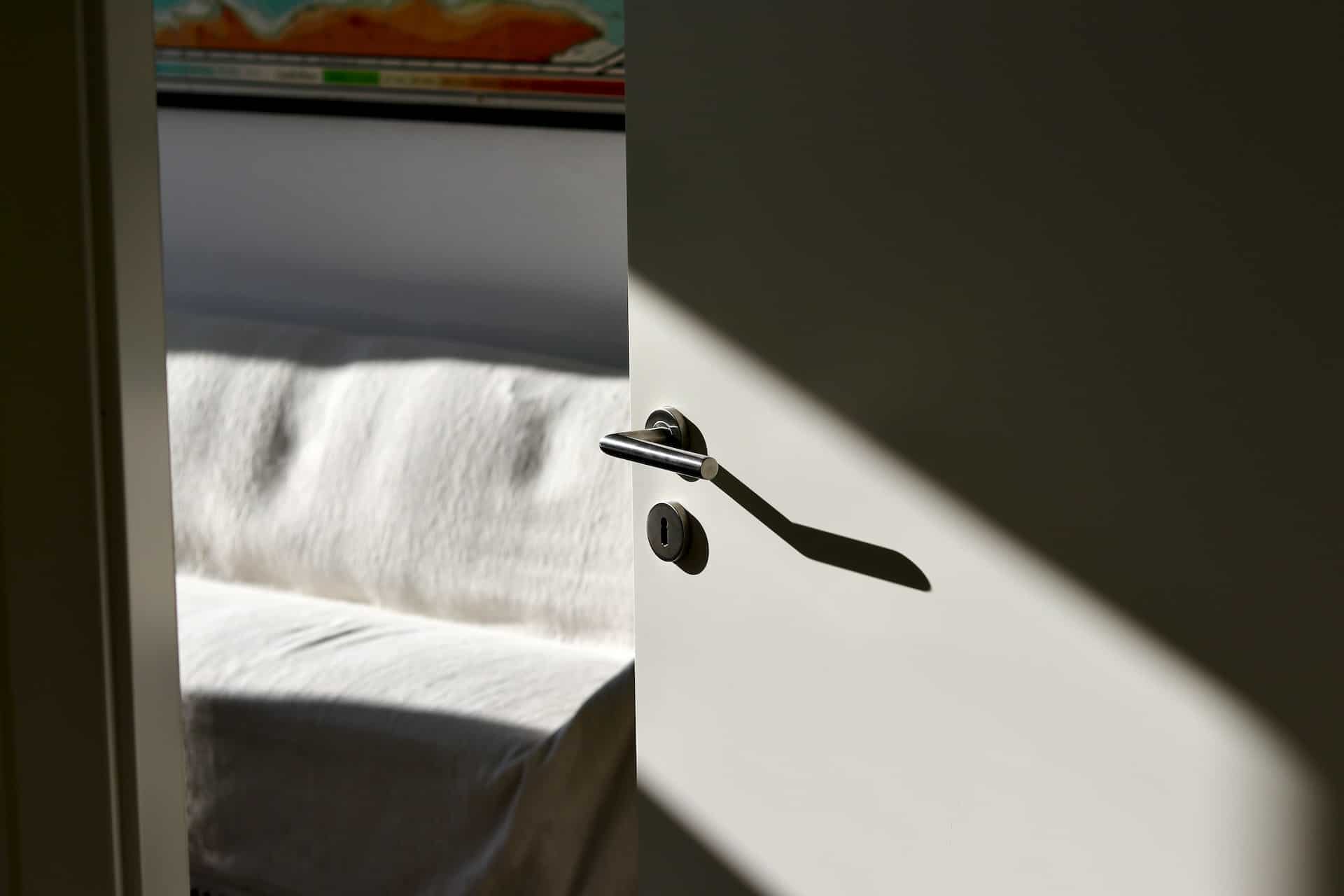Maintaining strong access control, visitor management, and security measures are crucial in managing Homeowners Associations (HOAs) and multi-family dwellings.
One important but often overlooked component of this is the role of door strike plates in fortifying security.
This guide will teach you the importance of updating and upgrading strike plates in your managed properties for better home security. We’ll discuss:
- What is a strike plate?
- Why you should consider upgrading your strike plates
- Available strike plate upgrades
- How to choose the right strike plate
- How to install upgraded strike plates
- Final thoughts
Let’s get started!
What is a strike plate?
A strike plate is a metal plate attached to or surrounding the door frame. It’s where your door latch engages to keep the door closed and secure. Different strike plate types are designed to accommodate various types of door-locking mechanisms.
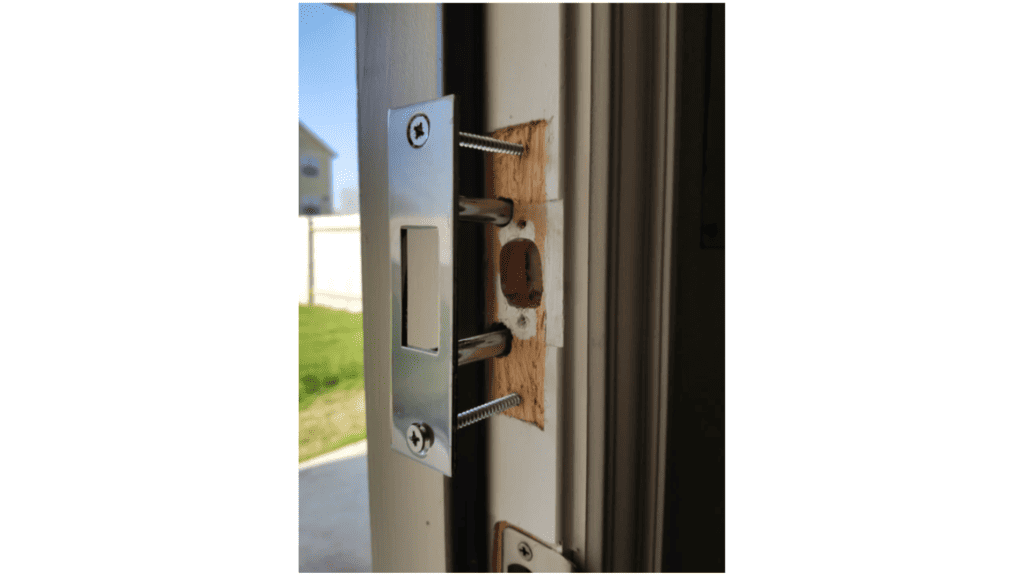
The features and quality of your strike plates can greatly affect the security level of your doors.
Types of strike plates
There are various types of strike plates available, which serve different door styles and security needs.
- Standard strike plates: These are the most common types and are typically included with the purchase of new door hardware.
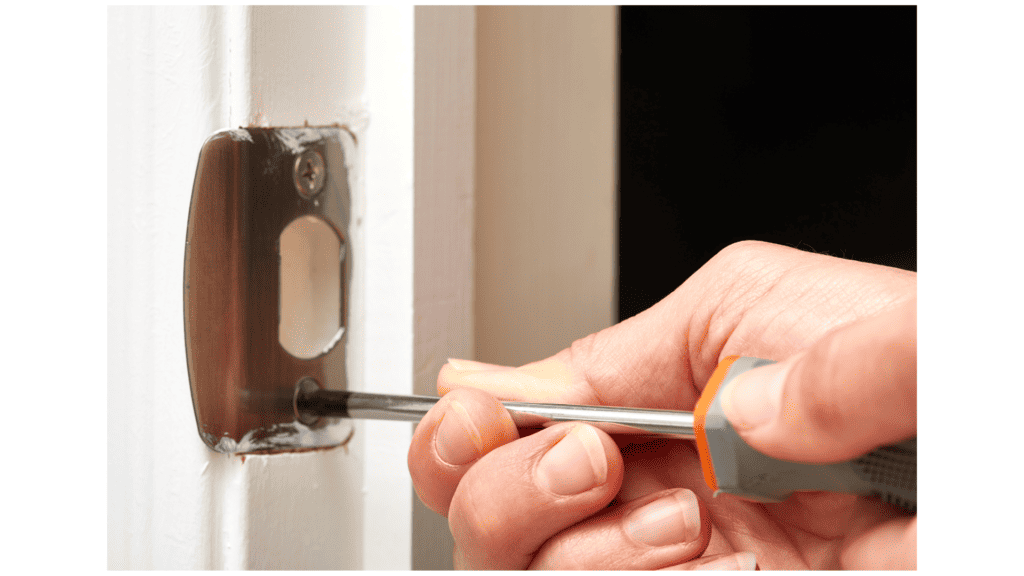
- Heavy-duty strike plates: These are thicker and often larger, providing greater resistance to forced entry.
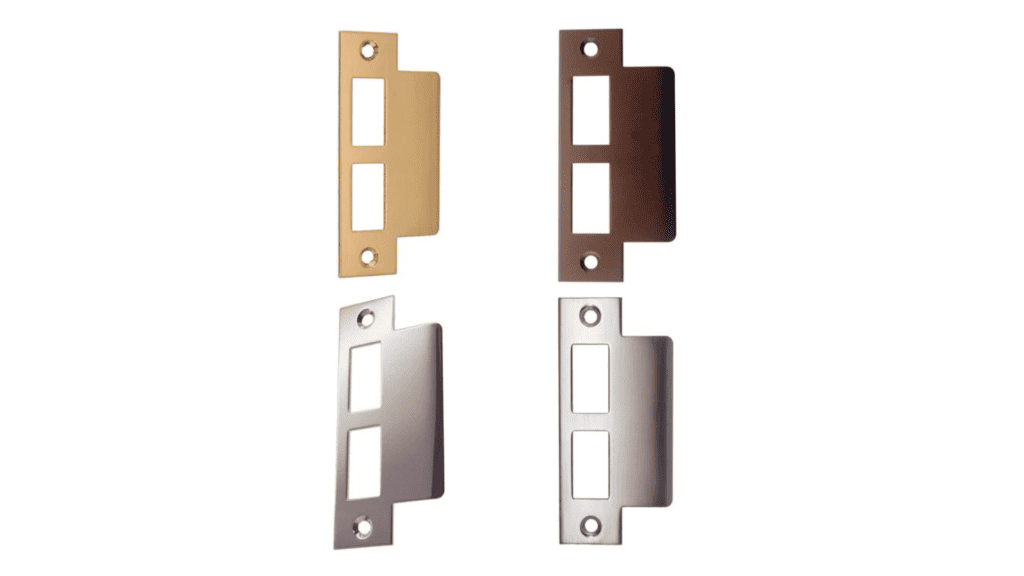
- Extended lip strike plates: These are designed for doors with unusual alignment or when there’s a need for a deeper latch engagement.
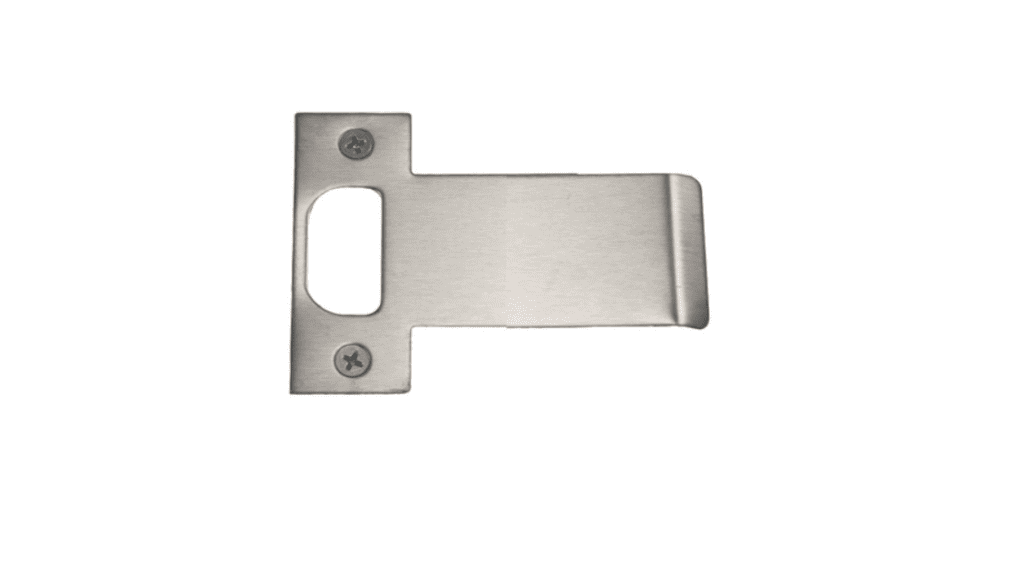
- Adjustable strike plates: These allow for minor adjustments for better door operation.
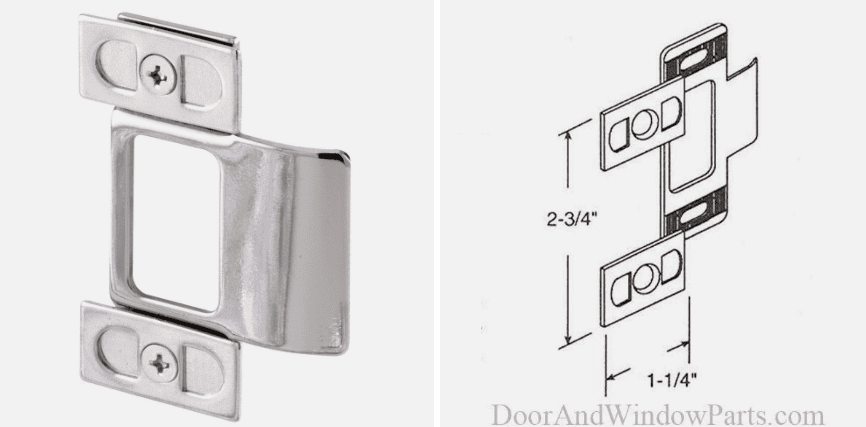
- Electric strike plates: These are used in conjunction with electronic locking systems, typically in commercial settings or where remote access control is required.
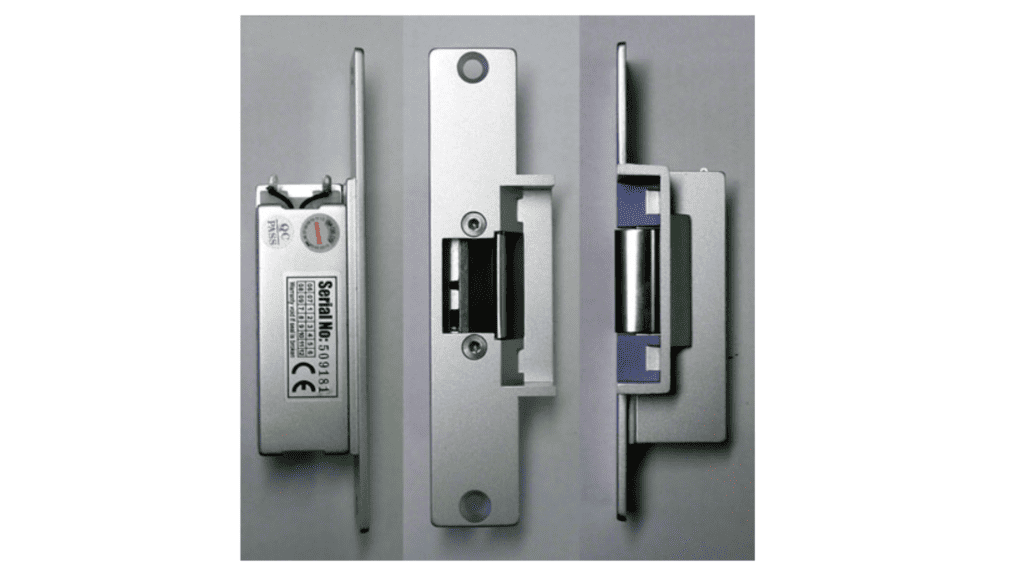
- T-strike and full lip strike plates: These options are based not on security but on the style of the door and lock mechanism.
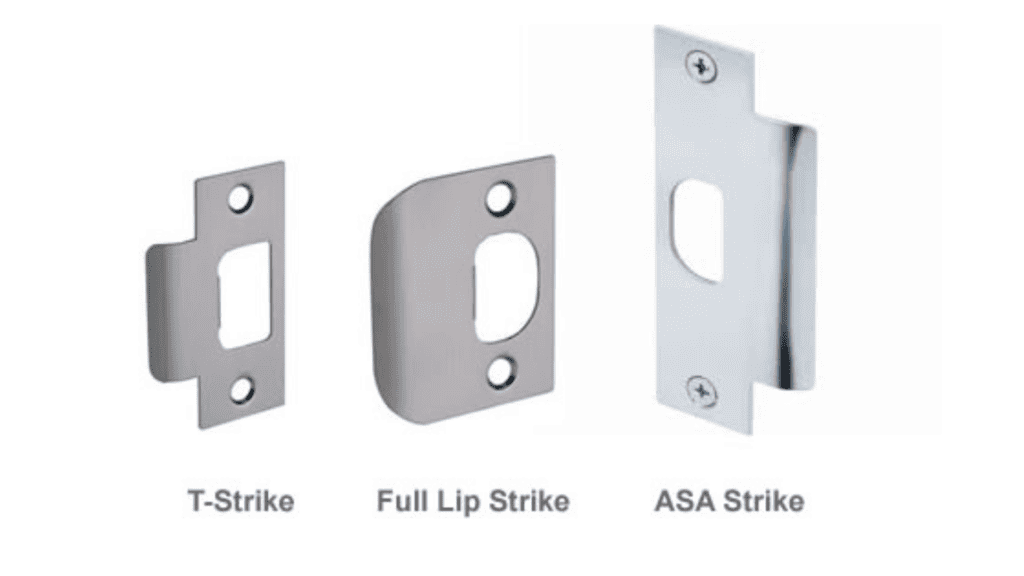
Choosing the right type should be based on the specific security requirements, the door’s construction, and the lock type.
Why you should consider upgrading your strike plates
More than 55% of burglaries in the United States involve some type of forced entry, which weak or substandard strike plates can often facilitate. Here are several reasons why you should consider upgrading your strike plates.
- Enhanced security: Thicker and larger strike plates are more resistant to forced entries.
- Prolonged durability: High-quality strike plates can endure harsh weather conditions and daily use, ensuring that your doors perform optimally for longer.
- Preventing door frame damage: Enhanced strike plates distribute the force of a kick or battering ram more evenly, thereby reducing the likelihood of the door frame being damaged in an emergency.
- Improved aesthetics: Upgraded strike plates come in various designs and finishes so you can match your door hardware, improving the overall aesthetic while enhancing security.
- Greater peace of mind: Proper security measures, including upgraded strike plates, contribute to a safer living environment for your residents, potentially attracting tenants for longer stays.
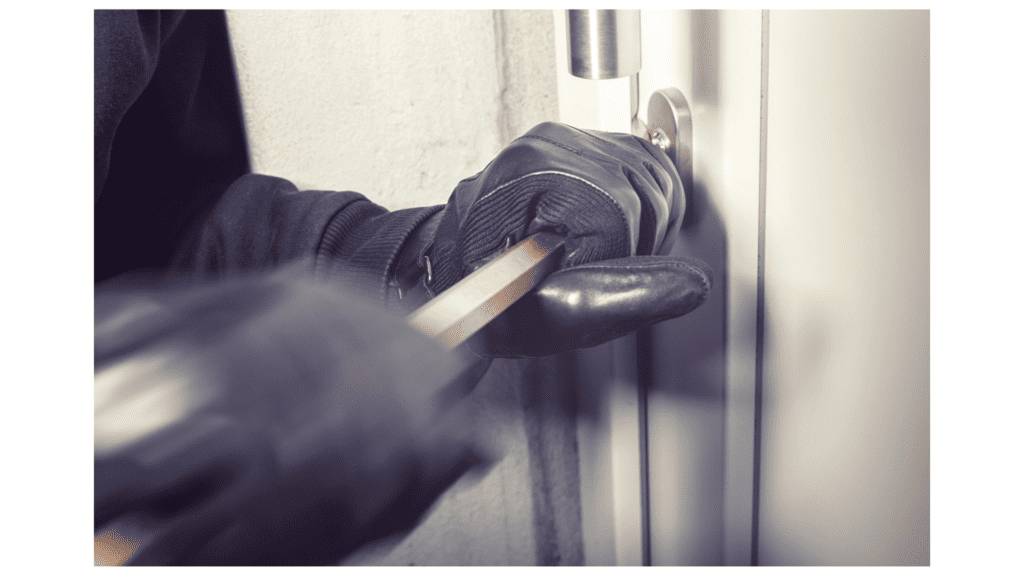
Remember that it is not just about keeping intruders out. You need every door to perform consistently and remain robust in the face of daily wear and tear. A worn-out or broken strike plate compromises safety and can lead to problems like residents getting locked in or out of their homes.
Available strike plate upgrades
Upgrading your property’s door strike plates can be a small investment with a significant impact. Here are some enhanced strike plate options to consider:
- High-security strike plates: These are made of heavy-duty steel and often include additional safety features such as anti-pry tabs.
- Extended strike plates: Extended plates are longer and provide a larger area for the door latch to engage, making it more difficult for someone to force entry.
- Reinforced strike plates: These combine the strength of high-security and extended strike plates. They are longer and thicker, offering an ideal solution for upgrading your property’s security.
- Smart strike plates: For properties with smart locks installed, these strike plates have compatible features designed for electronic lock systems, which are becoming increasingly common due to the convenience they offer residents.
Remember, no two properties are identical. The ideal strike plate solution may vary from property to property.
How to choose the right strike plate
Various factors must be considered when choosing a strike plate upgrade for your properties.
Current security situation
Conduct a comprehensive security assessment of each property to identify vulnerabilities and understand the type of security each door requires.
To accurately assess your current security situation, consider the following steps:
- Conduct a thorough security audit of each property, focusing on the doors’ current condition and strike plates.
- Check for any signs of wear and tear or damage that might affect the strike plate’s functionality.
- Determine the age of the current strike plates. Older models may not provide the same level of security as newer ones.
Remember to note any previous break-ins or attempted break-ins and their nature. For instance, were they forced entries? This could have caused strike plate damage that is difficult to detect without a proper assessment.
Budget
While cost should not compromise security, it is wise to plan your budget beforehand. Strike plate prices can range significantly depending on the type and brand.
In terms of budget planning:
- Estimate the number of doors or strike plates that need upgrading across all properties.
- Research different types of strike plates, noting their average costs, and calculate an overall estimate.
- Consider the long-term benefits and potential cost-savings of reduced damage or break-ins.
Don’t forget to factor in the cost of professional installation if needed. Security devices are not something that amateur handymen should be in charge of.
Compatibility
The selected strike plate should be compatible with your doors. Some are specifically designed for certain door types and lock systems.
Make sure you collect detailed knowledge about your doors and associated locking mechanisms by measuring the dimensions of your existing strike plates to ensure the upgraded ones will fit into the same place.
Understand the type of door material you have (wood, metal, PVC, etc.) to ensure the new strike plate will be compatible. If you’re considering smart strike plates, make sure they can be integrated seamlessly with any other smart home technology in use at your properties.
Professional Advice
Contact a professional locksmith or security consultant to ensure you make the right choice for your properties.
When seeking professional advice:
- Discuss your findings from the security assessment.
- Show them your budget estimates and ask for their recommendations to enhance door security, including both strike plates and beyond.
- Get a professional installation quote from the locksmith. They will ensure the proper fit and functionality of the strike plates, and their experience can often prevent damage to the door or frame during installation.
Remember, although cutting costs by doing it yourself may be tempting, improper installation can reduce a strike plate’s effectiveness and even damage the door.
Companies like Proptia can offer a comprehensive security evaluation and provide full-scale access control upgrades to ensure a happy, safe community.
How to install upgraded strike plates
If you attempt to install the upgraded strike plates yourself, it’s vital to do it correctly to ensure they serve their intended purpose. Here are the steps to follow:
- Remove the existing strike plate: Using a screwdriver, remove the screws holding the old strike plate in place.
- Prepare the door: Compare the size of your new strike plate to the existing hole. If the new one is larger, you will need to chisel out additional space. Ensure the new plate will fit level with the door frame.
- Position your new plate: Line up your new strike plate in the correct position, ensuring that the hole for the latch aligns perfectly with the hole in the plate.
- Secure your new plate: Fasten the new strike plate to the door using a screwdriver. Make sure it’s secure, but avoid over-tightening the screws, which could warp the plate or damage the door frame.
- Test the door: Close the door to test the engagement of the lock with the new strike plate. The door should close easily, and the lock should engage smoothly. If it doesn’t, make necessary adjustments to the positioning of the plate.
While DIY installation may seem straightforward, many factors can complicate the process.
If your doors are particularly old, if you’re dealing with an unusual door/lock mechanism, or if there’s a need for a lot of new chiseling, professional installation may be more desirable to protect your property and ensure the strike plates are effective.
In a multi-family or HOA property management scenario, replacing strike plates across a large number of doors might be an extensive job best left to the professionals. It could also be more cost-effective when the scale of the job is considered.
Final thoughts
Upgrading door strike plates is an often overlooked but crucial step in enhancing the security of your HOA or multifamily properties. A reinforced strike plate can significantly increase a door’s ability to withstand forced entry attempts and protect your residents.
However, this is just one aspect of a comprehensive property security strategy. Property managers need to account for multiple factors to create a safer living environment and upgrade various security features as needed.
We invite you to explore other security resources available on Proptia. Educate yourself about the current best practices in property management security, stay informed about emerging trends, and find the solutions that best fit your properties’ needs.
By improving security, you not only enhance the safety but also increase their value and your residents’ satisfaction.
GET IN TOUCH
Schedule a Demo

Nick is a tech-savvy freelancer with a passion for coding and a knack for writing. As a programmer by trade, he knows the ins and outs of the digital world, with a particular interest in PropTech and Security Tech. When he’s not tinkering with the latest software, you can catch him scaling mountains or unleashing his creative side on a canvas.

